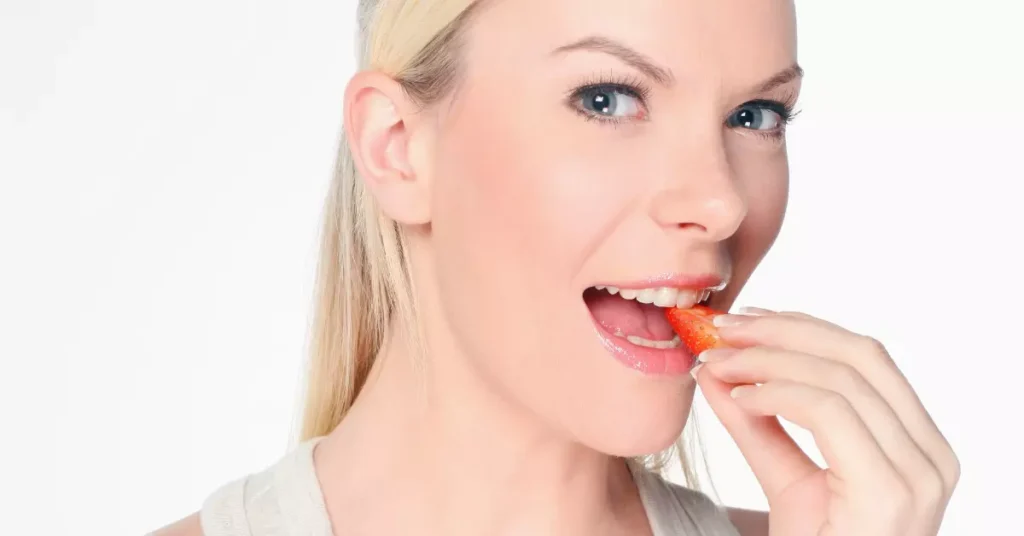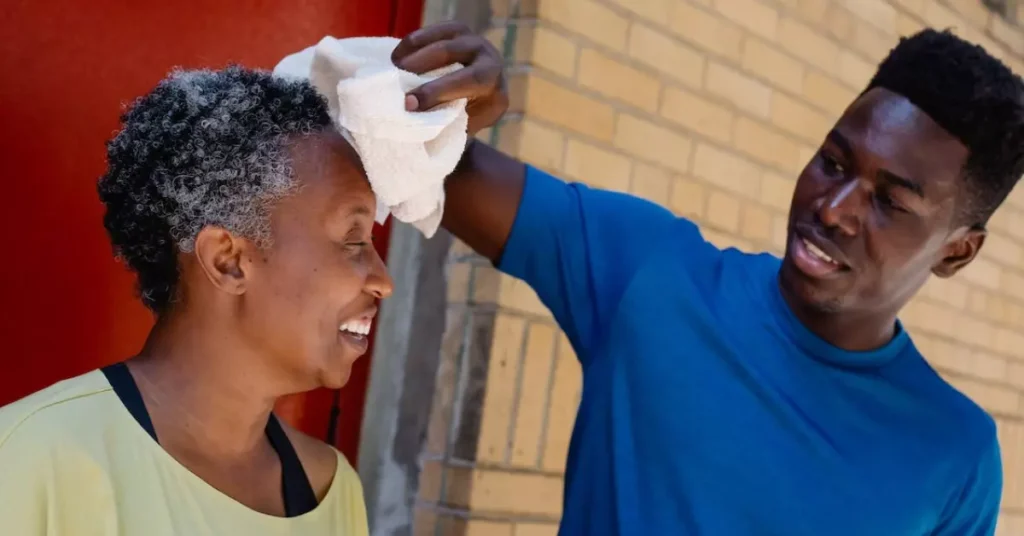
Fruits seem like a ‘healthy’ food choice to many people, especially those who enjoy the fresh, sweet and sometimes sour taste of this ‘natural’ food.
However, if you have diabetes and need to be mindful of your blood sugar, fruits may not be the best choice to eat in large proportions.
Also check out- Best Multivitamins to Buy for Men
Yes, fruits have fiber and contain many vitamins and minerals, but they also contain sugars. Therefore, deciding to include fruit in the diet becomes important for people with diabetes.
━━━━ continue after the ad ━━━━
━━━━━━━━━━━━━━━━
If you absolutely must eat some fruit in your diet, what are the best choices of fruits for diabetic patients?
And how do you decide how to rank what is best?
Below we discuss 10 Top Fruits for sugar patients in India that can be considered (in conjunction with your overall diabetic eating plan).
How to Analyse Your Fruit
There are many ways to examine a food’s impact on your health.
In terms of blood sugar and food, you can consider metrics such as grams of carbohydrates, net carbohydrates, macronutrient (carbohydrate) percentage etc.
Two further concepts often used for people with diabetes are Glycemic Index (GI) and Glycemic Load (GL).
The Glycaemic Index (GI)
The Glycaemic Index (GI) is a ranking system to allow people to understand how quickly or how high a particular food will raise their blood sugar.
The ranking is based on how fast a food is digested (usually over 2 hours) and its subsequent effect on blood sugar levels.
The Index measures the conversion speed into glucose and uses a scale of 1 to 100. (One being the slowest conversion).
The ranking is further grouped into Low, Medium and High GI Foods.
Low GI Foods: 55 and below
Medium GI Foods: 56-69
High GI Foods: 70 and above
Glycaemic Load (GL)
In addition to the GI rankings, there is a similar metric known as Glycaemic Load (GL).
━━━━ continue after the ad ━━━━
━━━━━━━━━━━━━━━━
This measurement includes the speed of the glucose conversion like GI but also looks at the amount of carbohydrates in an individual food (in an average serving).
The scale is different for GL:
Low GL Foods: 10 or less
Medium GL Foods: 11 to 19
High GL Foods: 20 or higher
It’s therefore important to consider a food’s Glycemic Index and the Glycemic Load for a more accurate picture of what will affect your blood sugar.
This is because food (especially some fruits) might be high on the GI (meaning they raise blood sugar fast – an example of this is watermelon with a high GI) but contain a low carbohydrate content – so the actual impact, according to the Glycemic Load is low – because watermelon is basically full of water!
10 Top Fruits for Diabetic Patients
1. Avocados
Okay, this seems like a trick! Technically avocado is a fruit, although many people see it as a vegetable.
It’s not sweet or sour like other fruits, but avocado is a major superfood containing many valuable nutrients.
Importantly for diabetics, it rates as Low on both GI and GL ranking systems.
Glycaemic Index – 10 (Low)
Glycaemic Load – 0.9 (Low)
2. Lemons
It’s unlikely that someone would consume an enormous amount of lemons. They are often used in drinks and recipes and are not usually eaten like an apple!
Glycaemic Index – 20 (Low)
Glycaemic Load – 0.6 (Low)
3. Coconut
Again, like avocadoes, not everyone recognises coconut as a fruit. (And no, this does not mean you can eat Bounty bars!).
Coconuts are highly versatile and can be used in savoury and sweet dishes.
Glycaemic Index – 40 (Low)
Glycaemic Load – 0.8 (Low)
4. Strawberries
One of the world’s most popular flavours is strawberry!
Strawberries are nutritious, and because they are so sweet, just a few will often satisfy sugar cravings.
Glycaemic Index – 25 (Low)
Glycaemic Load – 1.9 (Low)
5. Watermelon
━━━━ continue after the ad ━━━━
━━━━━━━━━━━━━━━━
Watermelon is the example used above in this article to demonstrate a high GI food but with a Low Glycemic Load due to the small amount of actual carbohydrates in the food. Be mindful of portion sizes will all fruits (see below).
(As explained earlier, The Glycemic Load measures the glycemic impact of the amount you eat of a given food).
Glycaemic Index – 75 (High)
Glycaemic Load – 5.6 (Low)
6. Black Currants
Don’t confuse the fresh black currant fruits with their dried counterparts – the dried black currants contain more than 10% more sugar than the fresh berries!
Glycaemic Index – 15 (Low)
Glycaemic Load – 1.1 (Low)
7. Sweet Cherries
Cherries are a lovely, sweet fruit with a relatively low effect on blood sugar, making them one of the preferred fruits for diabetic patients. Again, this fresh fruit is not to be confused with artificial or dried versions.
A nutritious and versatile fruit, cherries are used in many recipes, including popular desserts.
Glycaemic Index – 25 (Low)
Glycaemic Load – 4.0 (Low)
8. Blueberries
Berries are an excellent option for people who enjoy fruit but are watching their overall sugar intake.
Blueberries taste great and may also be suitable in small quantities for people managing their blood sugar, besides being fantastic antioxidant powerhouses.
Glycaemic Index – 25 (Low)
Glycaemic Load – 2.0 (Low)
9. Grapefruit
If you can take a strong, sour taste, grapefruit is for you. Grapefruit has a low glycaemic profile.
Glycaemic Index – 20 (Low)
Glycaemic Load – 0 (Low)
10. Plum
Plums come in different varieties and are a favourite of many for their taste, antioxidants, and essential nutrient content. Be careful with serving sizes to avoid too much sugar.
Glycaemic Index – 35 (Low)
Glycaemic Load – 3.9 (Low)
Important Notes
Because so many people believe fruit is healthy and can be eaten freely (no matter their health status), it is vital to consider the following points, especially if you have diabetes:
- Remember, PORTION SIZES are important. Any food can be potentially damaging if you eat giant loads of it! Fruit is often low in calories and, therefore, easy to overeat. Look at the portion sizes and how much sugar is in each portion size – or you might end up with a significant spike in blood sugar.
Example – Nutrition information is expressed differently, depending on the source. You may see the following:
- ¼ cup, ½ cup, 1 cup etc
- 100g
- One whole piece of fruit (various weights)
- “Serving size”
Each of these figures will display a different sugar content. Knowing the portion size is crucial as sugar amounts can vary greatly, making a ‘healthy’ choice unhealthy.
Examples –
1 Large apple is 223g (23g of sugar) vs 100g portion of apple (10g sugar)
1 small plum 66g (7g sugar) v 1 cup sliced plum 165g (16g sugar)
(A teaspoon is approximately 4g – you can determine how many teaspoons of sugar are in food if you know the total sugar content).
- Try to avoid Drinking your fruit. A glass of fruit juice may contain three, four or more individual pieces of fruit to make one glass of juice. You would probably never eat four oranges on your own! This is a common way to accidentally increase your blood sugar from fruits.
- Be careful of Dried fruits and Canned fruits. Fresh fruits have a very different nutritional makeup from dried or processed fruits. A few dates, dried apricots or sultanas can significantly add sugar to the diet, even with tiny proportions, compared to fresh fruit.
Final Words
Just because fruit is ‘natural’ does not mean it is suitable for people with diabetes in every instance.
When it comes to managing diabetes through diet, it’s important to focus on fruits with a low Glycemic Index (GI) and Glycemic Load (GL) rather than searching for “sugar free fruits for diabetics”, as all fruits naturally contain sugars to some extent.
Diabetes is one of the world’s most serious chronic illnesses. Diet is one of the main factors in developing diabetes (Type 2). What you eat is also extremely important in managing or reversing the illness. Please ensure you seek individual nutritional advice from a specialist who deals with diet and diabetes.
FAQs
Does fruit raise blood sugar?
Yes, as fruit contains carbohydrates, they will raise blood sugar. All carbohydrates raise blood sugar. Different fruits contain different amounts of carbohydrates (carbohydrates are sugar molecules). The fibre and water content of certain fruits can lessen the effect the carbohydrates will have on your blood sugar levels.
Which fruit is sugar free?
Fruits are not sugar-free. They are a carbohydrate-containing food. Some fruits have a small amount of sugar (lemons, limes, coconuts etc.) and some contain high amounts (apples, bananas, mangoes etc.). Always consider the fruit you eat in the context of your diet as a whole, and in conjunction with your doctor if you are diabetic.
Which fruit is best for sugar patient?
If you eat fruit and you are diabetic you have to consider your entire diet and medicine routine. The best fruit (or foods in general) will be low in sugar (carbohydrate).
It is not always as simple as looking at the amount of sugar in fruit. The best fruits may have medium or high sugar, but also a high water content (like watermelon), so the amount of sugar you actually ingest will be less, as the fruit is mostly made up of water or fiber.
What are the 5 worst foods for blood sugar?
The five worst categories of foods that can affect your blood sugar are:
– Sodas, sports drinks and juices
– Processed, refined foods, sweets, cakes etc
– Bread, cereals, pasta, rice, potatoes etc (Starchy foods can spike blood sugar more than sweet ones as they contan more mass of carbohydrates)
– Syrups and sauces such as honey, maple syrup, ketchup etc
– Sweetened yoghurts, flavoured desserts etc
References
- https://www.everydayhealth.com/diet-nutrition/101/nutrition-basics/the-glycemic-load.aspx
- https://www.dietdoctor.com/low-carb/fruits
- https://www.sciencedirect.com/science/article/pii/S1756464620301699
- https://glycemic-index.net/
- The American Journal of Clinical Nutrition (International table of glycemic index and glycemic load values)

TAGS:

Jennifer is the co-founder of menPsyche. She holds an Applied Science degree in Public Health & Health Promotion and authored the ‘Personal Disaster’ book series.
Jennifer has a vast range of experience across many domains, including extensive international exposure.



